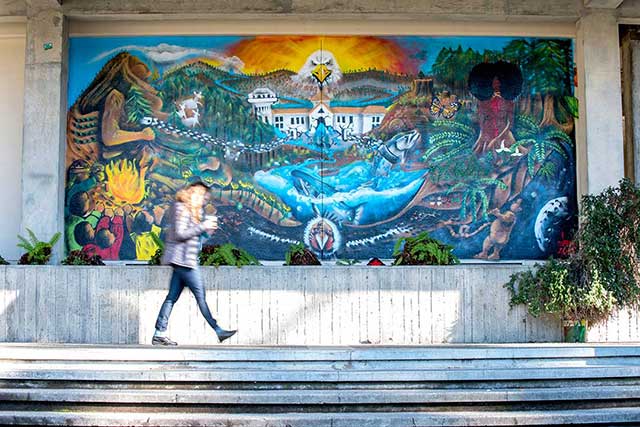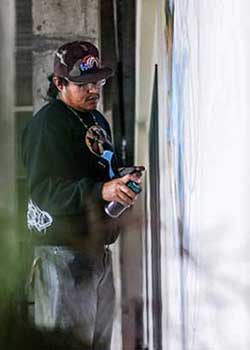
It’s a project that’s been in development since 2013. It all began when former HSU Art student Ryan Spaulding’s painting, “Super Taco,” was granted the Presidential Purchase Award. Every year, HSU’s president traditionally purchases one piece of artwork from a graduating senior to add to the campus’s permanent collection. The artwork is then displayed in a prominent setting. In this case, “Super Taco,” which depicts Mexican restaurant workers, was mounted in the J’s dining room, garnering mixed reactions. Students were quoted saying they wished the painting was more multicultural and voiced concerns that portraying only Mexican workers perpetuates stereotypes.
Soon, students began organizing around the issue of art on campus. Students from Find Resources and Empowerment Through Education (F.R.E.E.), Movimento Estudiantil Chican de Aztian (MECHA), and the Black Student Union (BSU), approached the Art Department to brainstorm appropriate ways to depict underrepresented students on campus.
Eventually, it was decided the painting would be removed from the J and students in F.R.E.E. set about creating a way to bring inclusive art to campus. “Very few paintings on campus depict people of color. We wanted a painting for ourselves that represented underrepresented students how we wanted,” says student Wilmer Ayala, a member of F.R.E.E.
In the discussion surrounding Super Taco, students had asserted that public art should reflect and celebrate the campus community. Now the students faced the challenge of making that a reality. “I see a huge need for more visual art. But, how do we find solidarity for all underrepresented students within one mural space?” says Samyrha Saba, a member of F.R.E.E.
“We want the mural to represent all people in an accurate way, a humanistic way, and a holistic way,” says Education Professor Marisol Ruiz, who, along with Social Work Professor César Abarca and Art Professor Kris Patzlaff, advised the students during the mural’s development. “It’s part of our culture to share and make the mural about everybody.”
Working closely with campus officials, the students pinpointed a location and theme and hunted for an artist to install the work. Enter Saba, whose full name is Randy Sabaque and describes himself as “addicted to painting.” With both Diné and Walatowa ancestry, Saba seeks cultural significance through his art, which can be seen throughout New Mexico. “This project really jumped out at me because the primary purpose of what I do is to reconnect with my culture and traditional ways,” he says.

Saba’s past murals include community-building projects with the Ysleta Del Sur Pueblo and the Navajo Tribe. “One of the themes I hope to capture is education from each other,” says Saba. His work changes regularly as the mural is installed, based on what he hears from passersby. “I love when people participate. I rely on getting feedback from people on the street.”
Humboldt’s mural is a collage of scenes taken from life on the North Coast. Abstracted human forms depict the diversity of the campus community while redwoods and salmon ground the mural in natural elements.
The work is done in a graffiti-style and was completed with spray paint, a medium Saba worked with frequently during his youth. “Organizations don’t often open up their spaces to this kind of work. It’s an amazing opportunity.”
The painting will be officially unveiled in early December.
Learn more about Saba at http://sabahut.com/about/
Watch one of Saba’s videos documenting the installation of the mural on YouTube. https://youtu.be/hTd-KWUNPbs
##